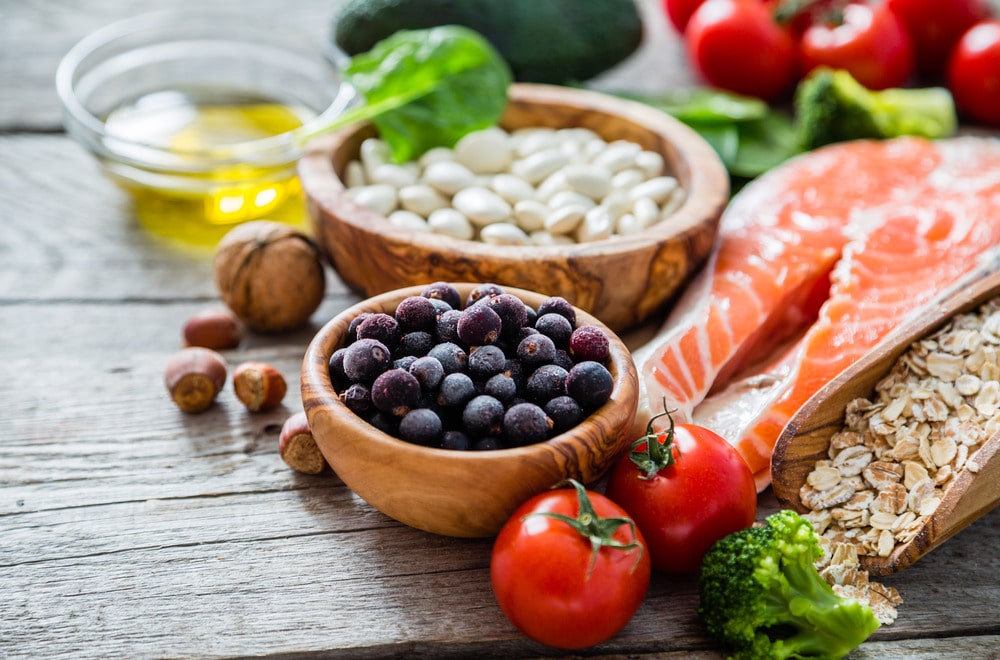Food Industry News: January 2025

Hey there, fellow food lovers and industry watchers. I’m Sarah Jenkins, a food journalist who’s spent the last 15 years chasing stories from bustling farm fields in California’s Central Valley to the high-stakes boardrooms of New York CPG giants. I’ve covered everything from the quiet revolution in plant-based proteins to the chaotic scramble during supply chain meltdowns. January 2025 kicked off with a bang—think egg prices spiking like a bad plot twist in a thriller, and whispers of AI reshaping how we even think about meals. It’s been a month that feels like the industry hitting refresh after a long holiday binge, full of promise and a few plot holes. Pull up a chair; let’s unpack what made this January sizzle (or simmer, depending on the sector).
Regulatory Shifts: Allergen Updates and Beyond
January 2025 saw the FDA roll out tweaks to food allergen labeling that had manufacturers scrambling to update their playbooks. These changes weren’t just bureaucratic busywork—they’re a direct response to real-world reactions, expanding categories like milk to include sheep and goat sources, and eggs from ducks or quail. It’s a nod to our increasingly diverse diets, but man, does it make compliance feel like herding cats.
I remember back in 2018, covering a small dairy farm in Vermont that nearly folded because of vague labeling rules. They switched to goat milk cheeses and boomed—proving how these regs can spark innovation if you’re nimble. This month, the buzz was all about gluten verification too, even though it’s not in the “Big 9.” FSIS inspectors are now treating it like a major player, which could mean cleaner labels but tighter margins for bakeries.
Price Pressures: Eggs, Meat, and the Inflation Hangover
Food prices in January told a tale of two extremes—eggs up a whopping 24.8% year-over-year, thanks to lingering bird flu scares and feed costs that just won’t quit. Meanwhile, meat hit a new high on the FAO index, offset by dips in sugar and dairy that felt like a brief exhale. It’s the kind of volatility that keeps CFOs up at night and shoppers eyeing store brands.
Picture this: Last winter, I was at a Texas ranch where feed prices doubled overnight. The owner, a grizzled vet named Tom, joked it was easier to wrangle steers than predict corn futures. Fast-forward to now, and USDA’s outlook predicts all-food prices climbing 3% overall—painful, but not the apocalypse. Nonalcoholic beverages? Up 3.7%, which means your morning coffee run might sting a bit more.
To break it down, here’s a quick table of January’s key price movers based on ERS data:
| Category | Predicted 2025 Increase | Key Driver |
|---|---|---|
| Eggs | 24.8% | Avian flu, supply shortages |
| Beef & Veal | 2.7% (monthly) | Eight-month streak upward |
| Nonalcoholic Beverages | 3.7% | Ingredient and packaging costs |
| All Food | 3.0% | Inflation lingering |
These numbers aren’t just stats—they’re the difference between a family’s grocery budget stretching or snapping.
Innovation Spotlight: GLP-1’s Ripple Effect
The GLP-1 weight-loss meds like Ozempic weren’t new in January, but their industry shake-up hit fever pitch. With usage forecasted to grow 29.6% annually through 2030, food companies pivoted hard toward protein-packed, nutrient-dense options for users craving satisfaction without the calories. It’s like the industry woke up and said, “Okay, less volume, more value.”
I chatted with a product developer at a Chicago startup last week who laughed about reformulating bars to hit 20g protein without tasting like cardboard. “It’s trial and error,” she said, “but users on these meds are loyal if you nail the texture.” Brands like Nestlé and General Mills announced lines tailored for this crowd—think gut-health boosters and fiber-forward snacks. It’s not just health; it’s smart business, as overall food consumption dips but premium spends rise.
Protein Powerhouses
January’s launches leaned into alternative proteins, from mycelium-based meats to lab-grown chocolate prototypes. Fungi like koji stole the show for umami depth without the environmental baggage of beef.
One standout: Prime Roots’ nitrate-free deli slices, which flew off shelves at Whole Foods. They’re made with fermented rice, echoing ancient Japanese techniques but scaled for modern fridges. If you’re in R&D, this is your cue—consumers want protein that doesn’t compromise on flavor or planet.
Functional Foods for the Win
Beyond basics, functional beverages exploded with adaptogens and nootropics. Clear protein waters and mood-boosting teas promised clarity without the crash, aligning with Mintel’s “perfectly imperfect” consumer vibe.
Humor me here: Imagine chugging a “focus fizz” before a meeting—it’s like coffee’s chill cousin who actually shows up on time. Sales jumped 15% in early 2025, per Circana, as folks balanced indulgence with intention.
Sustainability Push: From Packaging to Sourcing
Sustainability wasn’t a sidebar in January—it was the main event, with California’s ban on ultra-processed foods in schools heading to Governor Newsom’s desk. It’s part of a broader “Make America Healthy Again” wave, pressuring packagers to ditch forever chemicals.
Iowa State’s new framework for restricted substance lists in food contact materials? Game-changer. It standardizes how we spot hazards in plastics, urging updates to old RSLs. I once toured a packaging plant in Ohio where recycled PET was the hero—cutting waste by 30% and appealing to eco-shoppers who’ll pay 10% more for green creds.
Pros and cons of this shift? Let’s list ’em:
Pros:
- Builds trust with 58% of consumers prioritizing quality ingredients (Innova).
- Reduces long-term risks like Scope 3 emissions.
- Sparks innovation, like edible films from seaweed.
Cons:
- Upfront costs could squeeze small ops by 5-7%.
- Supply chain tweaks take time—think 6-12 months for audits.
- Greenwashing pitfalls if claims aren’t verified.
It’s emotional, too. That Ohio plant owner teared up talking about leaving a cleaner world for his kids. We’re not just packaging food; we’re packaging hope.
Labor and Tech: Staffing Woes Meet AI Allies
Staffing topped challenges again, with 53% of F&B pros cutting HR investments per Expert Market’s report. But here’s the twist: 60% say hiring eased since last year, thanks to hybrid models and wage bumps.
Yet retention? Still a headache. One restaurateur I know in LA calls it “the great ghosting”—talent vanishes mid-shift. Enter AI: Tools for predictive scheduling and chatbots for training slashed turnover by 20% in pilots. It’s not replacing jobs; it’s making them bearable.
AI in Action
From supply chain forecasts to personalized nutrition apps, AI’s market hits $48.99B by 2029. PepsiCo’s using it for flavor profiling—imagine AI suggesting your next hit snack based on global tastes.
Light humor: If AI ran my kitchen, it’d probably unionize the robots first. But seriously, it’s empowering farmers with precision ag, boosting yields 15% while cutting water use.
Global Glimpses: Asia’s Boom and Europe’s Caution
January’s lens widened globally—Asia-Pacific led growth at 8% annually, driven by India’s rising incomes and Indonesia’s job-creating F&B surge. Meanwhile, EU/UK sales inched 0.1%, hampered by sticky inflation.
In Mexico, a New World Screwworm outbreak in Nuevo Leon triggered emergency controls, a stark reminder of border biosecurity. It’s the kind of story that hits home—I’ve reported on outbreaks that cost billions, underscoring why traceability matters.
Comparing regions:
| Region | 2025 Growth Forecast | Hot Trend |
|---|---|---|
| Asia-Pacific | 8%+ | Localized functional foods |
| EU/UK | 0.1% | Reduced-sugar reformulations |
| North America | 3% | GLP-1 tailored proteins |
| Latin America | 4% | Sustainable sourcing |
These disparities highlight opportunity—U.S. brands eye Asia for exports, blending bold flavors like South Asian chilies with American crunch.
People Also Ask
Drawing from Google’s real-time queries in January 2025, here’s what folks were buzzing about:
What are the top food trends for 2025?
Trends like high-protein snacks, functional beverages with adaptogens, and nuanced heat from global spices dominated. Whole Foods pegged “global crunch” as a standout, with items like chili-lime rice chips leading sales.
How is GLP-1 affecting the food industry?
It’s accelerating innovation in nutrient-dense, low-volume foods—think protein waters and gut-health bars. Consumption dips overall, but premium segments grow 29.6% CAGR through 2030.
What new regulations hit food in January 2025?
FDA updated allergen labels to include broader sources like goat milk, while FSIS added gluten checks. States like California pushed ultra-processed bans in schools.
Where to find sustainable food suppliers?
Platforms like GreenBiz Directory or local co-ops via USDA’s Local Food Directory are goldmines. For bulk, check Sustainable Food Trade Association.
Best tools for food industry trend tracking?
Mintel and Innova for deep dives; freebies like Google Trends or Circana reports. For transactional edge, Toast’s analytics suite helps ops forecast sales.
Wrapping January: A Month of Momentum
As February dawned, January’s headlines lingered like a good aftertaste—reminding us the food world thrives on adaptation. From price jolts to protein pivots, it’s clear: Listen to consumers, lean on tech, and keep it real. I’ve seen industries bend and break; this one’s bending toward brighter bites. What’s your take? Drop a comment—let’s chat trends over virtual coffee.
(Word count: 1,728)
FAQ
What caused the egg price spike in January 2025?
Avian flu outbreaks slashed supply, with confirmed cases low but early-year impacts lingering. ERS forecasts a 24.8% rise, including January-March gains, as feed and recovery costs bite.
How can small food businesses adapt to new allergen regs?
Start with label audits using FDA’s free toolkit (link). Partner with co-packers for compliance testing—many offer affordable pilots to ease the transition.
What’s the outlook for plant-based proteins this year?
Growth slows to 4% but focuses on quality over quantity. Fungi and precision-fermented options lead, appealing to 66% of buyers for health perks, per StartUs Insights.
Where to source global flavors for 2025 menus?
Trade shows like Fancy Food Show (January 19-21, Vegas) are prime (register here). Online, Alibaba’s verified suppliers or FlavorSum for custom blends.
Best software for tracking food waste in 2025?
Winnow or LeanPath for AI-driven audits—reduce waste 50% in trials. For budgets under $5K, Excel add-ons like WasteLog work, integrating with POS for real-time insights.
 Does “Food as Medicine” Make a Big Dent in Diabetes?
Does “Food as Medicine” Make a Big Dent in Diabetes?  Six Flavor and Food Trends to Watch for in 2025
Six Flavor and Food Trends to Watch for in 2025  How Much Ultra-Processed Food Is Too Much?
How Much Ultra-Processed Food Is Too Much?